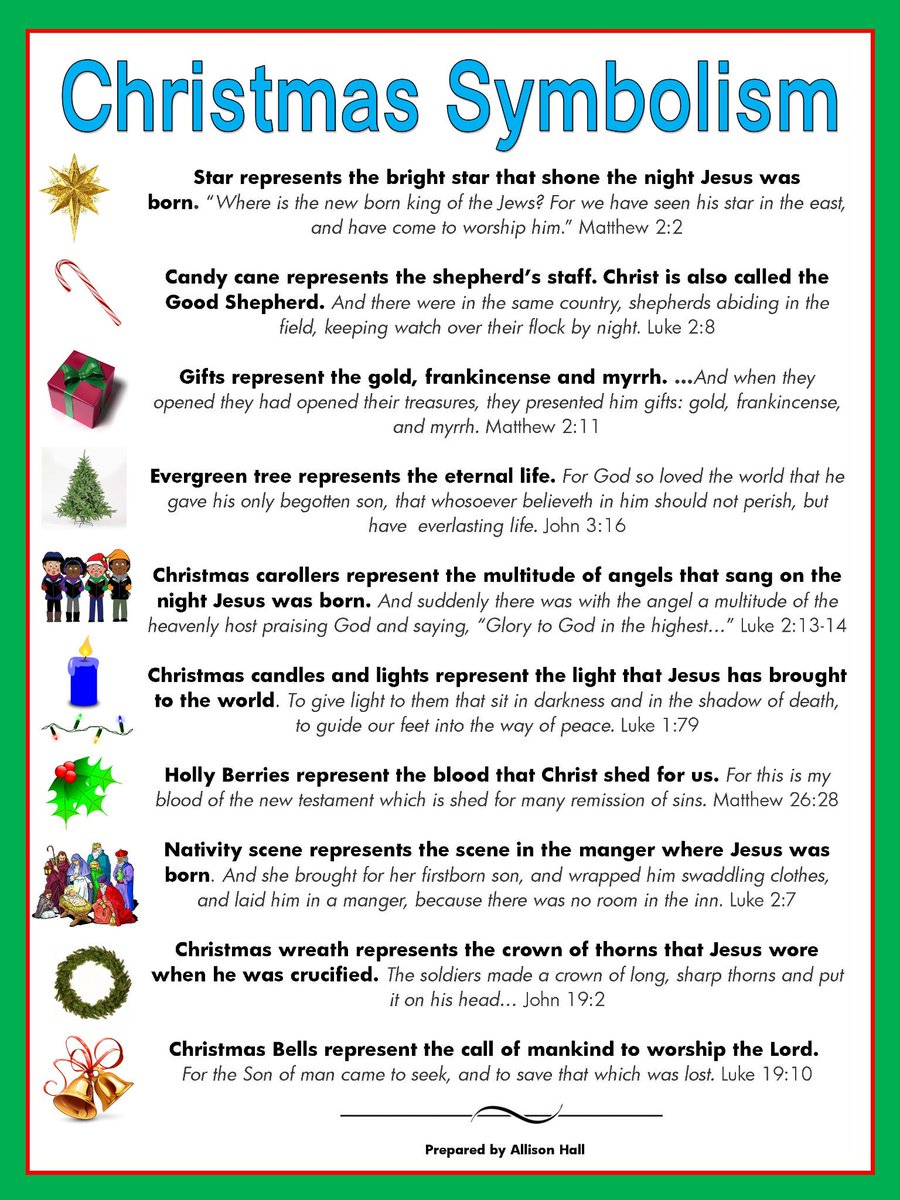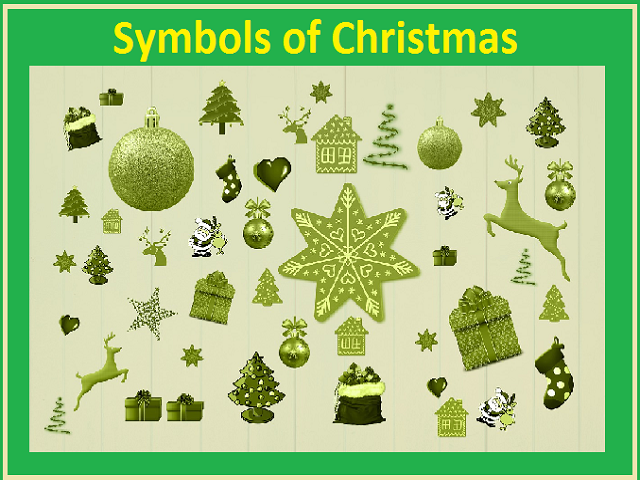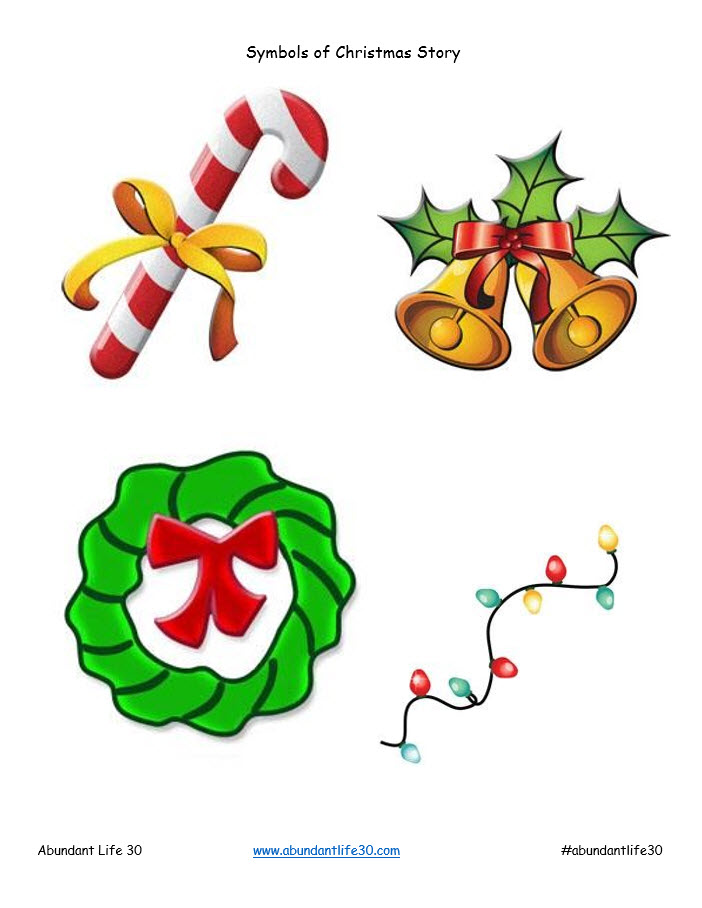
Christmas, a holiday commemorating the birth of Jesus Christ, is observed on December 25 by Christians around the world. The holiday has evolved over the centuries, incorporating various traditions, symbols, and customs. These symbols, often rooted in Christian theology, folklore, and cultural influences, have become an integral part of the festive season.
The significance of Christmas symbols can be understood on multiple levels. They not only add to the aesthetic appeal of the holiday but also convey deep meanings and messages. From the star-topped tree to the humble manger scene, each symbol tells a story, reminding us of the values, beliefs, and spirit of the season.
Understanding Christmas Symbols
To truly appreciate the essence of Christmas, it's essential to delve into the stories behind its symbols. These symbols serve as reminders of the holiday's rich history, cultural diversity, and spiritual significance.
1. The Christmas Tree

The evergreen fir tree has been a symbol of life and hope during the cold and dark winter months. The modern Christmas tree tradition is often attributed to 16th-century Germany, where trees were decorated with fruits, nuts, and other ornaments. The star or angel atop the tree represents the Star of Bethlehem or the angel Gabriel, signifying the guiding light of faith.
2. The Nativity Scene

The nativity scene, depicting the birth of Jesus in a manger, is a poignant reminder of the holiday's Christian roots. The scene typically includes Mary, Joseph, Jesus, the shepherds, and the Magi, symbolizing the universal message of love, humility, and devotion.
3. The Poinsettia

The poinsettia, with its striking red leaves, has become a popular Christmas symbol. According to Mexican legend, the plant's star-shaped leaves represent the Star of Bethlehem, while its red color symbolizes the blood of Christ.
4. The Wreath

The Christmas wreath, often made from evergreen branches, holly, or mistletoe, represents eternal life and the cyclical nature of the seasons. The wreath's circular shape symbolizes unity, wholeness, and the connection between heaven and earth.
5. The Candle

Candles have long been a symbol of light, hope, and spiritual guidance. In the context of Christmas, candles represent the light of Christ, illuminating the darkness and guiding us toward faith and redemption.
6. The Stocking

The tradition of hanging stockings by the chimney with care is believed to have originated in Europe, where children would receive small gifts and treats from Saint Nicholas. The stocking symbolizes generosity, kindness, and the joy of giving.
7. The Holly

Holly, with its prickly leaves and bright red berries, has been a Christmas symbol for centuries. The plant's ability to thrive during the harsh winter months represents resilience, hope, and the promise of new life.
8. The Mistletoe

The mistletoe, a parasitic plant with a rich history in European folklore, has become a popular Christmas symbol. According to tradition, a couple kissing under the mistletoe will be blessed with good fortune and love.
9. The Bell

Christmas bells, often ringing out during the holiday season, symbolize joy, celebration, and the announcement of the birth of Jesus. The sound of bells is also believed to ward off evil spirits and bring good fortune.
10. The Snowflake

Snowflakes, delicate and ephemeral, represent the beauty and wonder of the natural world. Each unique snowflake symbolizes the individuality and diversity of human experience, reminding us of the magic and mystery of the holiday season.
Conclusion
Christmas symbols, steeped in history, folklore, and spiritual significance, have become an integral part of the holiday season. As we decorate our homes, exchange gifts, and gather with loved ones, these symbols serve as reminders of the values, beliefs, and spirit of the season.
By embracing the stories and meanings behind these symbols, we can deepen our understanding and appreciation of Christmas, and cultivate a sense of connection to the people, traditions, and values that make the holiday so special.




What is the significance of the Christmas tree?
+The Christmas tree represents eternal life, hope, and the connection between heaven and earth. It is often decorated with ornaments, lights, and a star or angel on top, symbolizing the Star of Bethlehem and the guiding light of faith.
What is the meaning behind the nativity scene?
+The nativity scene represents the birth of Jesus in a manger, symbolizing humility, love, and devotion. It is a poignant reminder of the holiday's Christian roots and the universal message of hope and redemption.
What is the significance of holly and mistletoe during Christmas?
+Holly and mistletoe are traditional Christmas symbols, representing hope, resilience, and the promise of new life. According to folklore, kissing under the mistletoe will bring good fortune and love.











